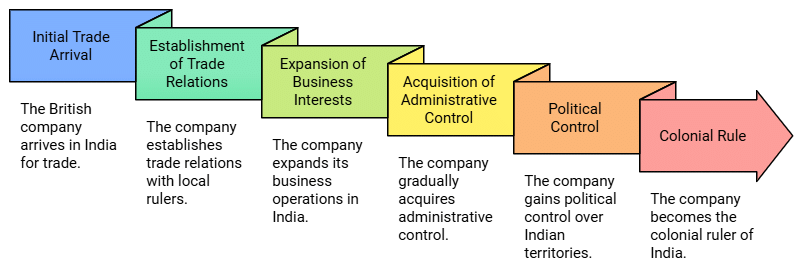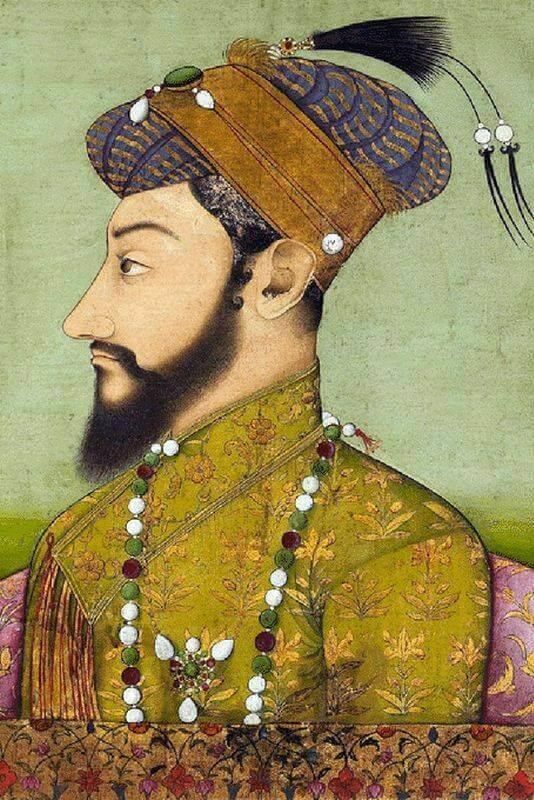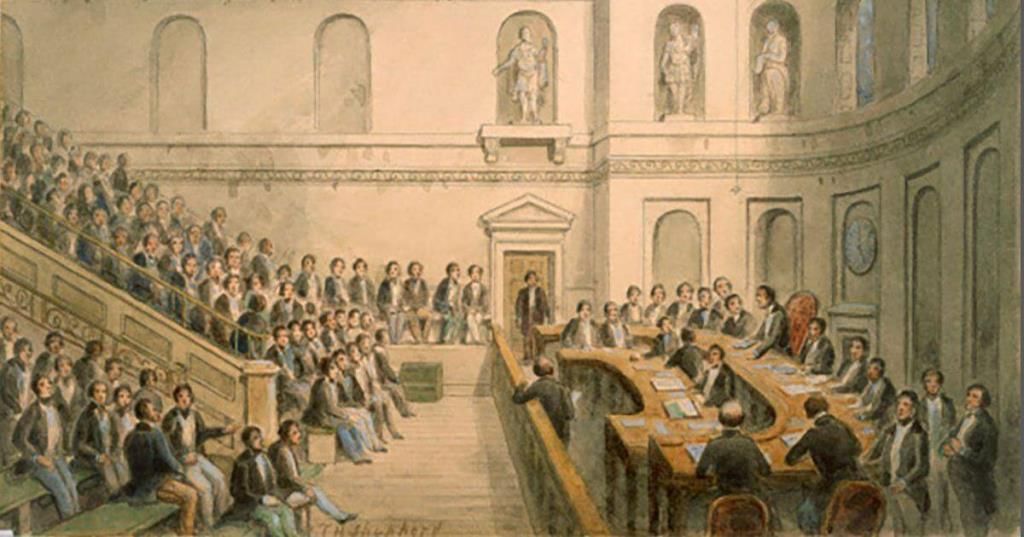Introduction - From Trade to Territory | Social Studies (SST) Class 8 PDF Download
Introduction
This chapter is about how a British company came to India for trade purposes. Later to protect and grow its business interests how it gradually acquired administrative and political control of India. Ultimately it became a colonial ruler for a vast country like India.

Decline of the Mughal Rule
In 1707 after the death of Aurangzeb, powerful regional kingdoms emerged in various parts of India. Delhi was no longer the center of power. After 1750s the British power started to emerge in India. Aurangzeb
Aurangzeb
 |
Test: From Trade to Territory (The Company Establishes Power)- 1
|
Start Test |
Arrival of East India Company
In 1600, the East India Company acquired a charter from the ruler of England, Queen Elizabeth I, granting it the sole right to trade with the East. This meant that no other trading group in England could compete with the East India Company. With this charter the Company could venture across the oceans, looking for new lands from which it could buy goods at a cheap price, and carry them back to Europe to sell at higher prices.
 A typical day in the East India company
A typical day in the East India company
The royal charter, however, could not prevent other European powers from entering the Eastern markets. By the time the first English ships sailed down the west coast of Africa, around the Cape of Good Hope, and crossed the Indian Ocean, the Portuguese had already established their presence in the western coast of India and had their base in Goa. In fact, it was Vasco da Gama, a Portuguese explorer, who had discovered this sea route to India in 1498. By the early seventeenth century, the Dutch too were exploring the possibilities of trade in the Indian Ocean. Soon the French traders arrived on the scene.
Competition and Reduction of Profit:
The problem was that all the companies were interested in buying the same things. The fine qualities of cotton and silk produced in India had a big market in Europe. Pepper, cloves, cardamom, and cinnamon too were in great demand. Competition among the European companies inevitably pushed up the prices at which these goods could be purchased, and this reduced the profits that could be earned. Cotton farm
Cotton farm
 |
Download the notes
Introduction - From Trade to Territory
|
Download as PDF |
Eliminating Rivals of Trade
The only way trading companies could flourish was by eliminating rival competitors. The urge to secure markets, therefore, led to fierce battles between the trading companies. Through the seventeenth and eighteenth centuries, they regularly sank each other’s ships, blockaded routes, and prevented rival ships from moving with supplies of goods. Trade was carried on with arms and trading posts were protected through fortification.
This effort to fortify settlements and carry on profitable trade also led to intense conflict with local rulers. The company, therefore, found it difficult to separate trade from politics.
|
69 videos|426 docs|46 tests
|
FAQs on Introduction - From Trade to Territory - Social Studies (SST) Class 8
| 1. What was the primary goal of the East India Company when it first arrived in India? |  |
| 2. How did the East India Company transition from being a trading entity to a territorial power in India? |  |
| 3. What were some of the key factors that contributed to the East India Company’s success in India? |  |
| 4. What role did the Battle of Plassey play in the East India Company’s expansion in India? |  |
| 5. How did the arrival of the East India Company impact the local economy and society in India? |  |






















